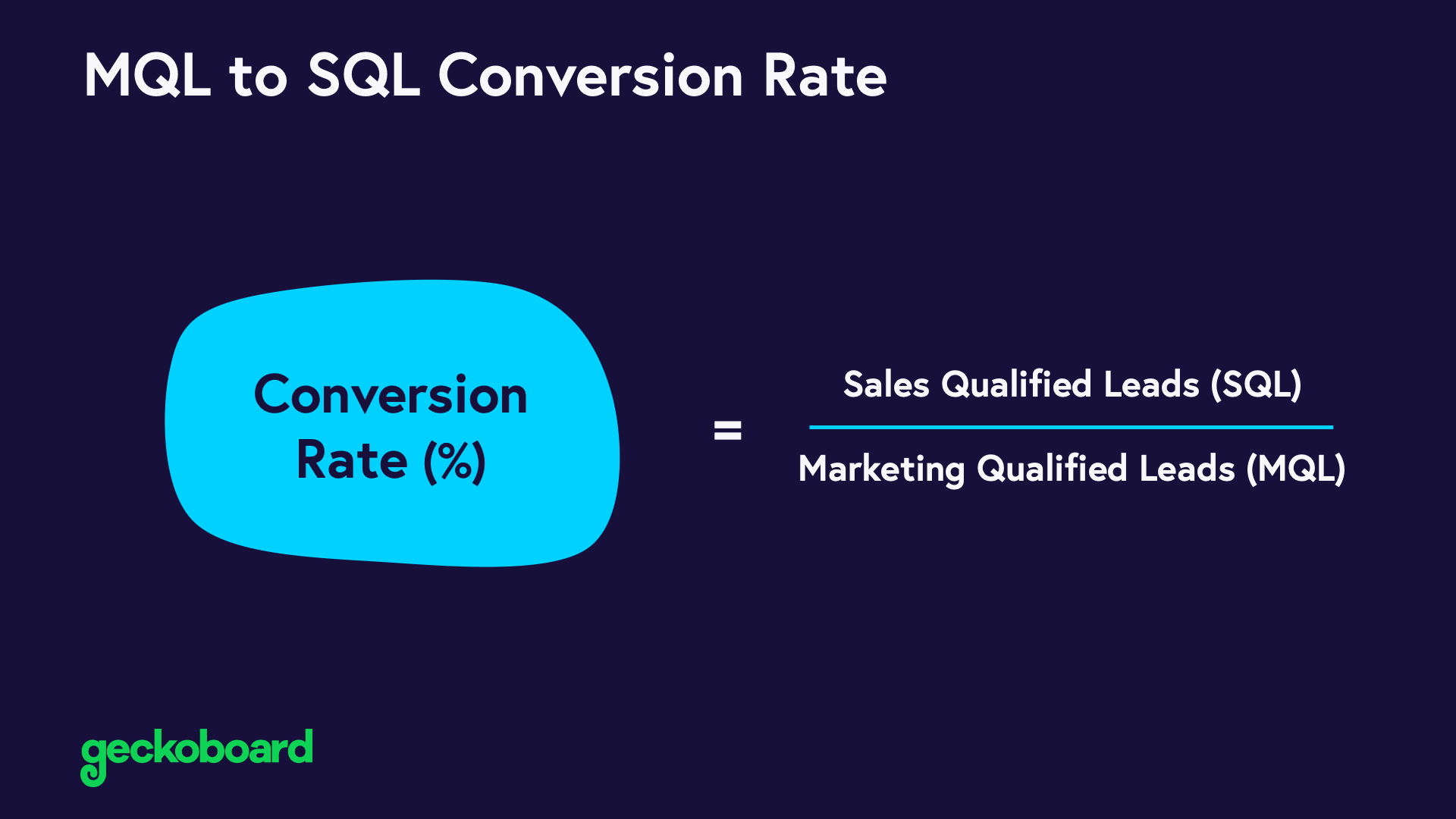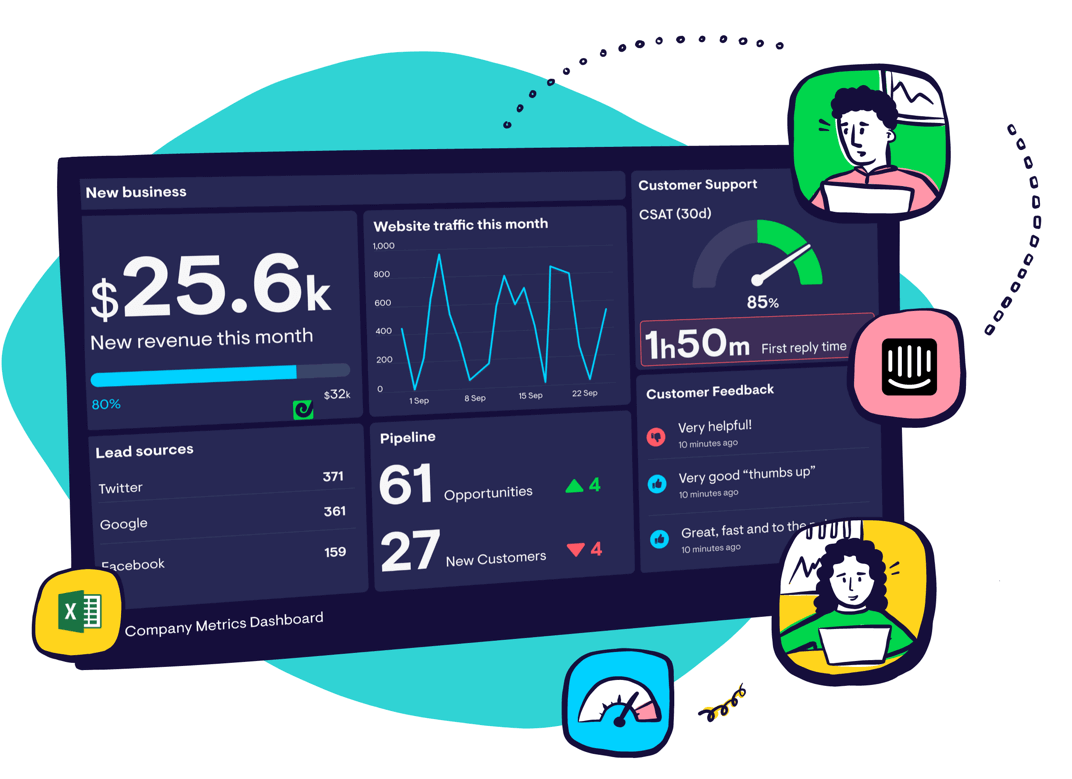MQL to SQL Conversion Rate
What is Marketing Qualified Lead (MQL) to Sales Qualified Lead (SQL) Conversion Rate?
Marketing Qualified Leads, commonly known as MQLs, are individuals who have indicated they’re more interested than other leads, but not quite ready to fully commit. Ideally, you should only allow certain, designated forms to trigger the promotion of a lead to the MQL stage, specifically those that gate bottom of the funnel offers like demo requests, buying guides, and other sales-ready calls to action.
Sales Qualified Leads (SQLs) are individuals that your sales team has accepted as ready for a direct sales follow up. Using this stage will help your sales and marketing teams stay in sync regarding the quality and volume of leads that you are handing over to your sales team.
The sales metric MQL to SQL conversion rate is the percentage of marketing qualified leads that get converted to sales qualified leads. It’s one of the best ways to determine lead quality and an excellent indicator of how well your marketing team is qualifying and screening leads to maintain a high quality pipeline.
How to calculate MQL to SQL Conversion Rate:
(#) of Sales Qualified Leads / (#) of Marketing Qualified Leads = (#) MQL to SQL Conversion Rate

Pros:
- Understand the efficiency of you sales development reps in terms of converting Marketing Qualified Leads into Sales Qualified Leads for Account Executives to follow-up on.
- Understand if there are issues with the quality of leads being passed to your sales team from marketing.
Cons:
Similar to SQL to Win Conversion Rate, MQL to SQL conversion rates can be skewed by your average sales cycles length. If it spans multiple months, then looking at MQLs created then converted to SQLs within a month won’t tell you an accurate story because there should be no expectation of converting MQLs within a month.
It’s important to look at Average Sales Cycle Length, to understand over what timeframe you should expect an MQL to convert on average and factor that into the KPI calculation. For example, if your average conversion time from MQL to SQL is 3 months, you should take SQLs created in month 3 and divide them by MQLs created in month 1.
Relevant Sales Metrics and KPIs:
If you’re adding MQL to SQL Conversion Rate to your sales KPI dashboard, you might want to also consider tracking these related sales metrics for context.
Industry Benchmarks and Examples
Implisit analyzed the pipelines of hundreds of companies and found that the average conversion rate from Lead to Opportunity (another way of saying MQL to SQL) was 13%, and took an average of 84 days to convert. However, this varies hugely based on what the source of the lead was.
For example, website lead converted at 31.3%, customer and employee referrals at 24.7% and webinars at 17.8%. Meanwhile, email campaigns convert at just 0.9%, lead lists at 2.5% and events at 4.2%. Source.
| Lead Source for B2B Companies | Benchmark for MQL to SQL Conversion Rate |
|---|---|
| Website Lead | 31.3% |
| Customer/Employee Referral | 24.7% |
| Webinars | 17.8% |
| Events | 4.2% |
| Lead Lists | 2.5% |
| Email Campaigns | 0.9% |
Additional Notes:
The sales KPI, MQL to SQL Conversion Rate is also known as Lead to Opportunity Conversion Rate.
Some businesses add a Sales Accepted Lead (SAL) stage between MQL and SQL. SALs are leads that have passed certain acceptance criteria but that need further qualification, usually a Sales Development Rep, before being accepted by an Account Exec as a SQL.
